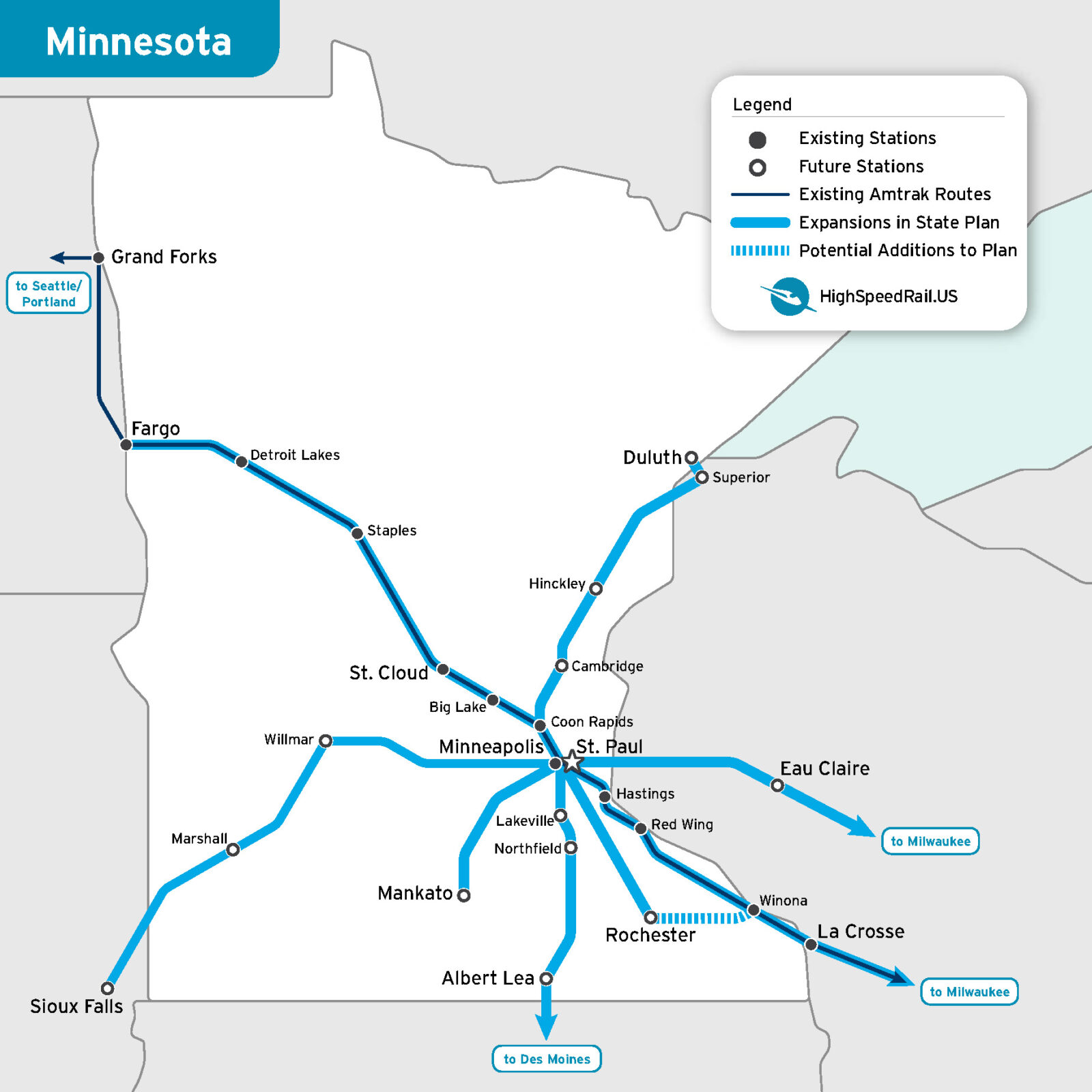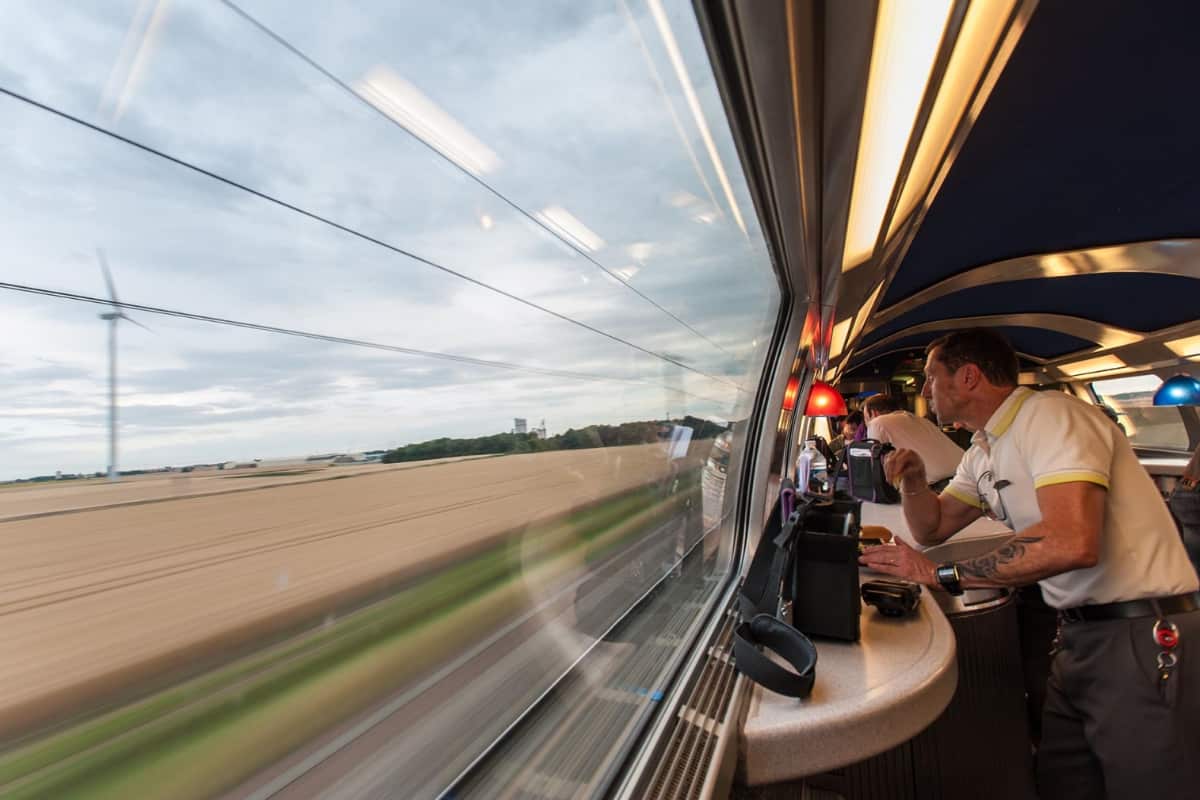Minnesota is Long Overdue for Great Passenger Trains
Golden Opportunity
Fast, frequent trains would boost Minnesota’s economy, reduce its carbon emissions, and create a 400-mile corridor of innovation stretching from the Twin Cities to Chicago. The route is often cited as a prime candidate for high-speed trains, for three reasons:
- Minneapolis/St. Paul will soon be the second-biggest metropolitan area in the Midwest, surpassing Detroit. Its population is projected to increase to roughly 5 million (from 3.5 million) by 2055.
- Twin Cities to Chicago is the most popular air route in the region, with more than twice as many flights as the second-most popular route (Kansas City to Chicago). The flight is 3 to 4 hours, including terminal time. 220 mph trains would cut the trip to under 3 hours.
- A corridor bookended by the Twin Cities and Chicago would be a powerful magnet for global tourism and a powerhouse of innovation across multiple sectors. Key stops could include Rochester, home of the Mayo Clinic, and Madison, home to Wisconsin’s state government and flagship university.

Minnesota State Rail Plan
- The most recent Minnesota rail plan calls for the state to “create a “robust intrastate and interstate intercity passenger rail system.” It names fast trains that connect the Twin Cities “with viable service to major outlying regional centers” as a high priority.
- The 2021 Midwest Regional Rail Plan by the Federal Railroad Administration envisions the Chicago to Twin Cities corridor as the spine of a regional railroad network. With trains running to Chicago at maximum speeds of 220 mph, 10 percent of trips in the entire Midwestern network would begin or end in the Twin Cities.
Easy Wins
In the near term, there are relatively easy, high-impact wins Minnesota could pursue. For example:
More Empire Builders
The Empire Builder runs between Chicago and Seattle and stops at six Minnesota stations daily, each way. The Empire Builder runs at top speeds of 79 mph and has the highest ridership of any long-distance route in Amtrak’s system.
The legislature approved matching funds for a second daily Empire Builder run between the Twin Cities and Chicago in 2021. It was the first time Minnesota had agreed to fund more passenger-rail service in nearly thirty years. It is expected to begin operating in 2023.
We hope that Illinois, Minnesota and Wisconsin will get to work on adding a third and forth daily roundtrip.
Northern Lights Express
The Northern Lights Express is a proposed line between Target Field in Minneapolis and Union Depot in Duluth. The project would upgrade BNSF tracks to accommodate 4 roundtrip trains a day running at up to 90 mph. A range of groups and interests support it, including the chambers of commerce in Duluth and Minneapolis. The 150-mile project is ready to go, if and when the legislature approves the funds.
Northstar
Northstar train line, running about 40 miles from Target Field in Minneapolis to the northern suburb of Big Lake, had low ridership even before the pandemic. But the problem has never been lack of demand. It’s a case of a cautious first-phase offering too few options to be useful. The Northstar should extend the line to St. Cloud and offer regular service throughout the day.
Gopher It, Minnesota
The consensus is clear. The case is strong. Minnesota should have fast, frequent train service. For the sake of the economy, the environment, and the future, it’s time for the legislature to get moving.
The Latest from HSRA
Our Latest Blog Posts
Check out the latest news, updates, and high speed rail insights from our blog!

It’s a Beautiful Country
Let’s see it. Let’s clean it. Let’s build it. Let’s make high speed rail a reality.

